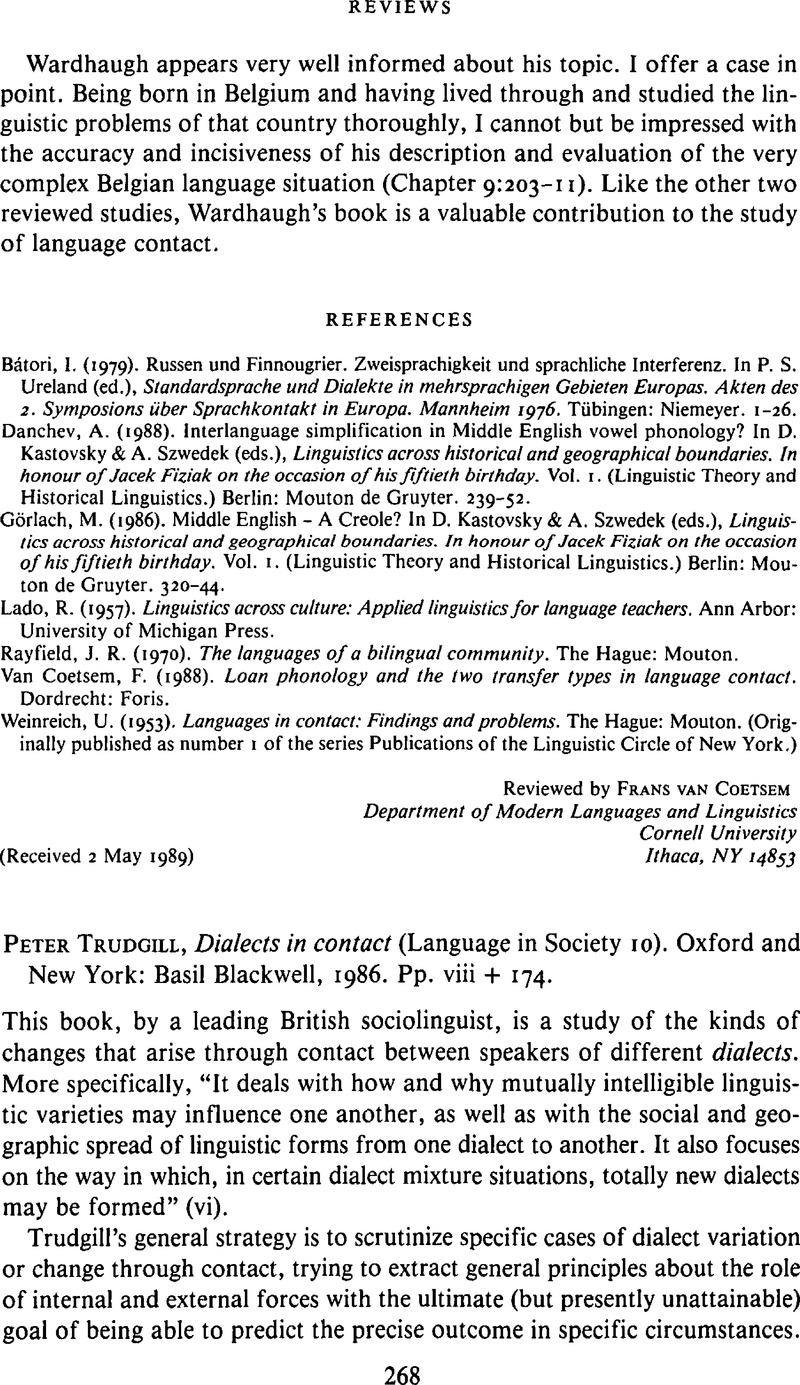No CrossRef data available.
Article contents
Peter Trudgill, Dialects in contact (Language in Society 10). Oxford and New York: Basil Blackwell, 1986. Pp. viii + 174.
Published online by Cambridge University Press: 18 December 2008
Abstract
An abstract is not available for this content so a preview has been provided. Please use the Get access link above for information on how to access this content.

- Type
- Book Review
- Information
- Copyright
- Copyright © Cambridge University Press 1990
References
REFERENCES
Bell, A. (1984). Language style as audience design. Language in Society 13:145–204.CrossRefGoogle Scholar
Dulay, H., Burt, M., & Krashen, S. (1982). Language two. New York: Oxford University Press.Google Scholar
Feagin, C. (1988). Variation studies in Great Britain. American Speech 63:76–87.CrossRefGoogle Scholar
Giles, H. (1973). Accent mobility: A model and some data. Anthropological Linguistics 15:87–105.Google Scholar
Guttman, L. (1950). The basis for scalogram analysis. In Stouffer, S. A. et al. (eds.), Measurement and prediction. New York: Wiley. 60–90.Google Scholar
Guy, G. R. (in press). Saliency and the direction of syntactic change. Language.Google Scholar
Hymes, D. (1971). Introduction to Part III, General Conceptions of Process. In Hymes, D. (ed.), Pidginization and creolization of languages. Cambridge: Cambridge University Press. 65–90.Google Scholar
Labov, W. (1972). Sociolinguistic patterns. Philadelphia: University of Pennsylvania Press.Google Scholar
Naro, A. J. (1981). The social and structural dimensions of a syntactic change. Language 57:63–98.CrossRefGoogle Scholar
Pavone, J. (1980). Implicational scales and English dialectology. Unpublished Ph.D. dissertation, Indiana University.Google Scholar
Rickford, J. R. (1988). Decreolization paths for Guyanese singular pronouns. In Gilbert, G. (ed.), Pidgin and creole linguistics: Essays in Honor of John E. Reinecke. Honolulu: University of Hawaii Press. 130–38.Google Scholar
Thomason, S. G., & Kaufman, T. (1988). Language contact, creolization, and genetic linguistics. Berkeley: University of California Press.CrossRefGoogle Scholar
Trudgill, P. (1974). The social differentiation of English in Norwich. Cambridge: Cambridge University Press.Google Scholar
Trudgill, P. [1974] (1983b). Sociolinguistics: An introduction to language and society. Rev. ed. Middlesex: Penguin.Google Scholar
Wells, J. (1982). Accents of English. 3 vols. Cambridge: Cambridge University Press.CrossRefGoogle Scholar




